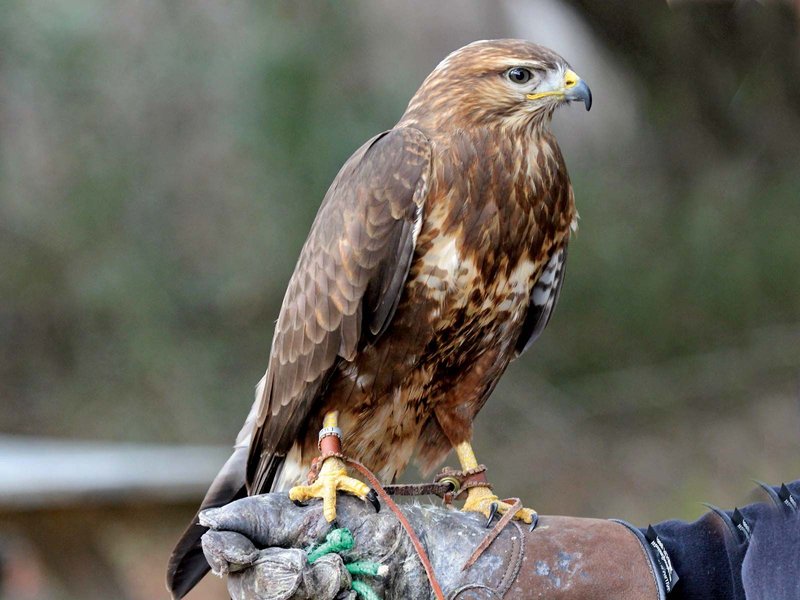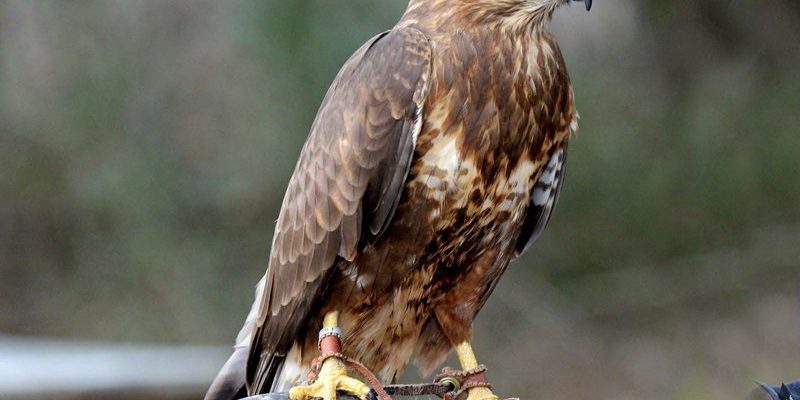
Have you ever spotted a bird soaring high above, effortlessly gliding on thermals while scanning the ground for a meal? If so, you might have been lucky enough to see a buzzard. These magnificent creatures belong to the family Accipitridae and are often confused with other birds of prey due to their similar appearances. But buzzards have their own unique features and behaviors that set them apart.
Buzzards are fascinating, not just for their striking appearance, but also for their roles in our ecosystems. They’re like nature’s clean-up crew, helping control rodent populations and keeping our environment balanced. As we explore more about buzzards, you’ll discover what makes them such remarkable birds. Whether you’re an avid birdwatcher or just curious, there’s a lot to learn about these aerial hunters.
What is a Buzzard?
A buzzard is typically recognized as a medium to large-sized bird of prey found across various continents, mostly in Europe, Asia, and Africa. The name “buzzard” can refer to different species depending on the region. For instance, in North America, the term typically refers to the turkey vulture, while in the UK and parts of Europe, it most commonly denotes the common buzzard (Buteo buteo).
These birds are characterized by their broad wings and a short tail. Their plumage varies widely but often features browns and tans, making them effectively camouflaged among trees and fields. When you see a buzzard, their large, rounded wings and soaring flight patterns are often mesmerizing. They prefer open landscapes, such as farmland, heathland, and woodland edges, which provide ample hunting opportunities.
Physical Characteristics
Buzzards are quite impressive in stature. Adult buzzards can range from about 18 to 26 inches in length, with a wingspan that can stretch from 4 to 5 feet. This size aids them in soaring effortlessly over vast distances. Their feathers can display an array of colors, from deep browns to lighter mottled patterns, adding to their beauty.
One of the most striking features of the buzzard is its strong beak, designed for tearing apart prey. Raptor birds like buzzards have excellent eyesight, enabling them to spot potential meals from great heights. Their sharp talons are equally impressive, allowing them to grasp and hold onto prey securely. When you think about it, a buzzard’s body is perfectly built for hunting in the sky.
Behavior and Hunting Techniques
Buzzards are opportunistic hunters. They primarily feed on small mammals, birds, and carrion. Their hunting style can vary based on the habitat they occupy and the availability of prey. You might spot a buzzard perched on a tree or fence post, scanning the ground for movement. Once they see something, they’ll swoop down in a dramatic fashion, using their speed and precision to catch their meal.
These birds are also known for their soaring behavior. Buzzards often take advantage of thermal currents to gain altitude without much effort. Watching them glide gracefully can be a breathtaking sight, as they seem to effortlessly navigate the sky. Their distinctive call, a series of high-pitched whistling notes, can often be heard when they’re in their territory.
Habitat and Distribution
Buzzards are highly adaptable birds, thriving in a variety of habitats. They can be found in forests, grasslands, hills, and even urban areas. This adaptability helps them find food sources in different environments. For instance, in rural areas, they might hunt small mammals in fields, while in forested regions, birds and rodents might be their primary targets.
In terms of distribution, common buzzards are found throughout Europe and parts of Asia. In North America, the term “buzzard” often refers to the turkey vulture. This shows how common the name is, even if the birds themselves differ. Buzzards typically migrate to warmer areas when the weather turns cold, showcasing their smart survival strategies.
Reproduction and Nesting
Buzzards are monogamous and often form long-term pair bonds. Their breeding season typically starts in late winter or early spring. During this time, you might see them performing aerial displays to attract mates. After forming a bond, they work together to build their nest, usually placed in a tall tree or on a cliff ledge. They use sticks and other materials to create a sturdy space for their young.
The female buzzard typically lays 2 to 4 eggs, which she incubates for about 30 days. Once hatched, both parents take turns feeding the chicks, teaching them essential survival skills. Buzzard chicks are quite vulnerable at first, but they grow rapidly, gaining strength and confidence. By the time they fledge, they are ready to take on the skies themselves, showcasing their parents’ hard work and dedication.
Conservation Status
Fortunately, many buzzard species are currently not considered endangered. The common buzzard, for example, has a stable population across Europe. However, habitat destruction and hunting can pose threats to certain local populations. It’s essential to ensure that these majestic birds have a safe environment to thrive for generations to come.
Conservation efforts are important in protecting their habitats and raising awareness about the impact humans can have on wildlife. Participating in local conservation programs can help ensure that buzzards continue to soar in our skies. Observing these birds in their natural habitats can be a rewarding experience, fostering a deeper appreciation for the wildlife around us.
Interesting Facts About Buzzards
| Size: | 18-26 inches in length |
| Wingspan: | 4-5 feet |
| Diet: | Small mammals, birds, carrion |
| Lifespan: | 10-15 years in the wild |
| Habitat: | Forests, grasslands, urban areas |
| Mating: | Monogamous pairs, long-term bonds |
In Conclusion
Buzzards are majestic birds that play a vital role in our ecosystems. Their adaptability, striking appearance, and fascinating behaviors make them a delight to observe. Whether you’re an experienced birdwatcher or just someone enjoying a day outdoors, keep an eye out for these incredible creatures. By understanding and respecting their habitats and behaviors, we can contribute to their continued survival and ensure they remain part of our natural landscape for future generations.
FAQ
What do buzzards eat?
Buzzards primarily feed on small mammals, such as rabbits, and rodents. However, they are not picky eaters and will also consume birds and carrion. Their opportunistic nature allows them to adapt their diet based on what’s available in their environment, making them effective hunters.
How can I identify a buzzard?
Buzzards can be identified by their broad wings, short tails, and striking plumage that ranges from browns to tans. They have a large wingspan, and their soaring flight pattern is distinctive. Listening for their unique calls can also help identify them in the wild.
Are buzzards solitary or social birds?
Buzzards are generally solitary outside of breeding season. During the breeding season, they form monogamous pairs and often build nests together. They are known to be territorial and may defend their nesting areas aggressively.
Do buzzards migrate?
Some buzzard species do migrate, typically moving to warmer areas during the colder months. However, many buzzards, especially the common buzzard, can remain in their habitats year-round if conditions allow.
What’s the difference between a buzzard and a hawk?
While buzzards and hawks are both birds of prey and belong to the same family, they are different species. Buzzards tend to be larger with broader wings and more varied plumage patterns compared to typical hawks. Their hunting styles and habitats can also differ.
Can buzzards be found in urban areas?
Yes, buzzards can often be found in urban areas, especially near parks or open spaces where they can find food. They adapt well to different environments, which allows them to thrive even in cities.
What materials do buzzards use to build their nests?
Buzzards typically use sticks, grasses, and other natural materials to build their nests. They often choose tall trees or cliffs to create a safe environment for their eggs, ensuring protection from predators.
How long do buzzard chicks stay with their parents?
Buzzard chicks generally stay with their parents for several weeks after fledging. They learn important skills from their parents during this time, such as hunting and navigating their territory. Eventually, they become independent and start to find their own food.
Are buzzards endangered?
Most buzzard species, including the common buzzard, are not currently endangered and have stable populations. However, local threats like habitat destruction and hunting can impact specific populations, making conservation efforts important.
What is the lifespan of a buzzard?
Buzzards typically live around 10 to 15 years in the wild. Their lifespan can vary based on environmental conditions and availability of food, but they generally have a robust life cycle when their needs are met.

